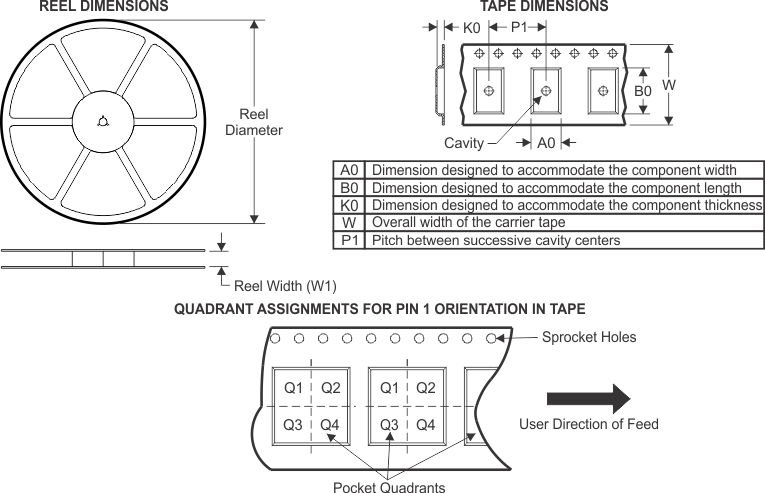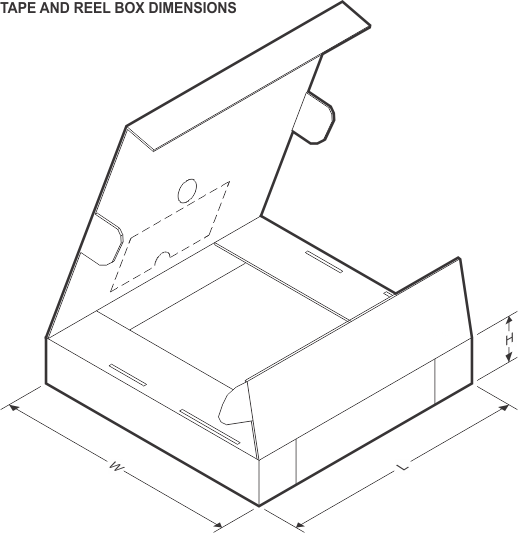SLASFC6 August 2024 TAS2120
ADVANCE INFORMATION
- 1
- 1 Features
- 2 Applications
- 3 Description
- 4 Pin Configuration and Functions
- 5 Specifications
-
6 Detailed Description
- 6.1 Overview
- 6.2 Functional Block Diagram
- 6.3 Device Functional Modes
- 6.4 Feature Description
- 6.5 Programming
- 7 Application and Implementation
- 8 Power Supply Recommendations
- 9 Layout
- 10Device and Documentation Support
- 11Revision History
- 12Mechanical, Packaging, and Orderable Information
Package Options
Mechanical Data (Package|Pins)
- RBG|26
Thermal pad, mechanical data (Package|Pins)
Orderable Information
12.2 Tape and Reel Information

| Device | Package Type | Package Drawing | Pins | SPQ | Reel Diameter (mm) | Reel Width W1 (mm) | A0 (mm) | B0 (mm) | K0 (mm) | P1 (mm) | W (mm) | Pin1 Quadrant |
|---|---|---|---|---|---|---|---|---|---|---|---|---|
| PTAS2120RBGR | VQFN-HR | RBG | 26 | 3000 | 330 | 12.4 | 3.8 | 4.3 | 1.5 | 8 | 12 | Q1 |

| Device | Package Type | Package Drawing | Pins | SPQ | Length (mm) | Width (mm) | Height (mm) |
|---|---|---|---|---|---|---|---|
| PTAS2120RBGR | VQFN-HR | RGB | 26 | 3000 | 360.0 | 360.0 | 35 |


